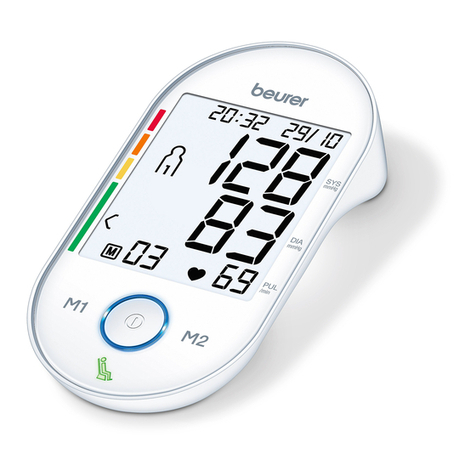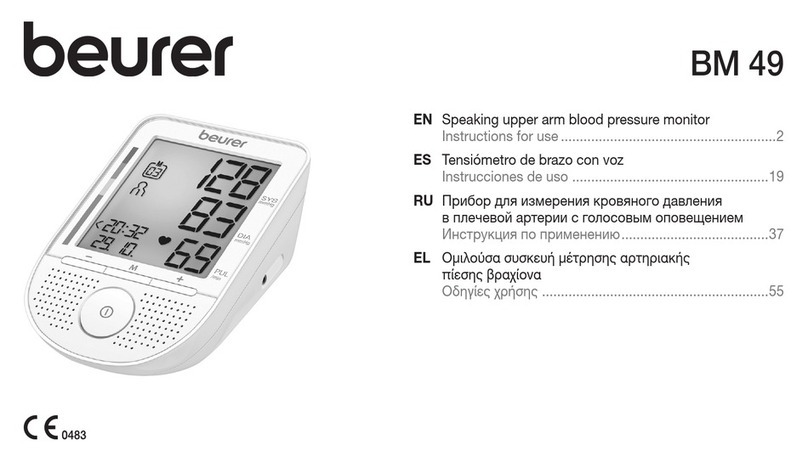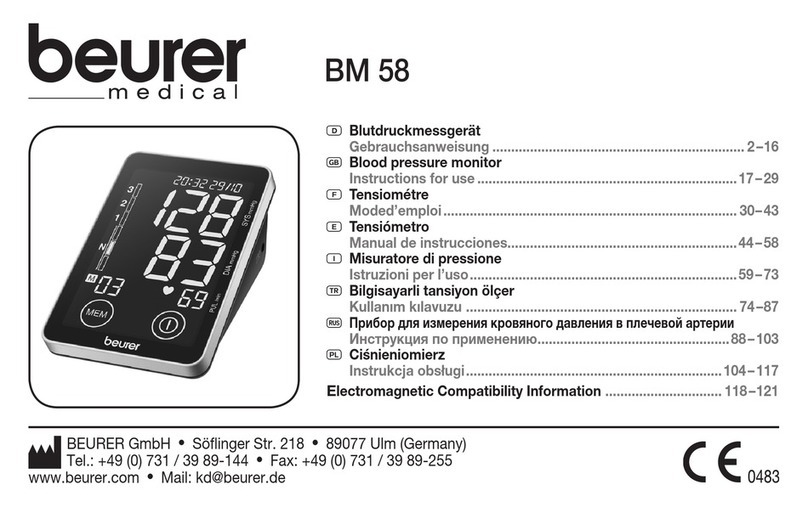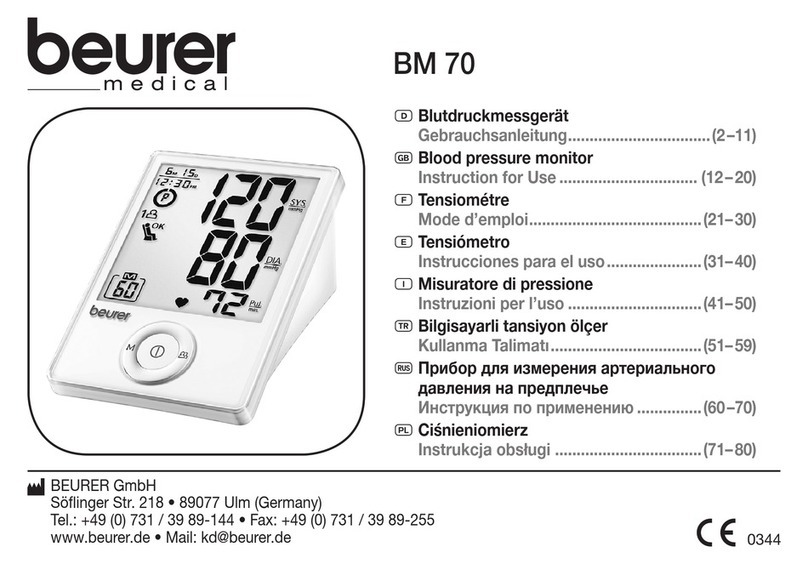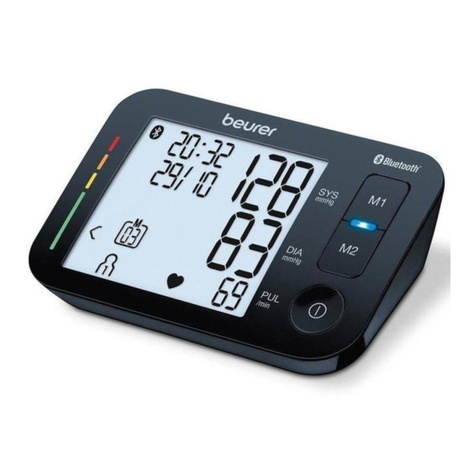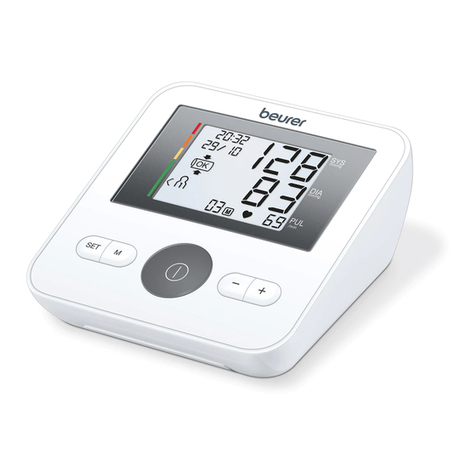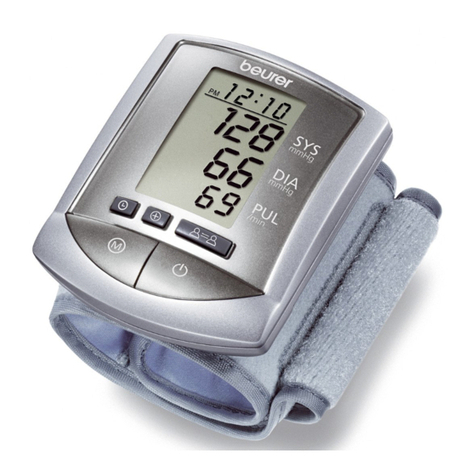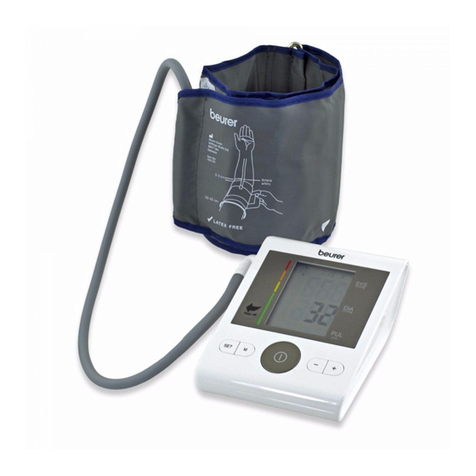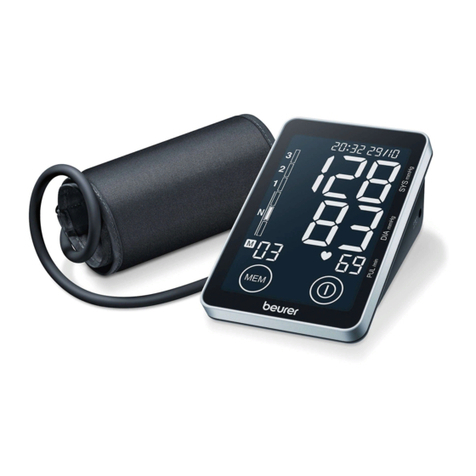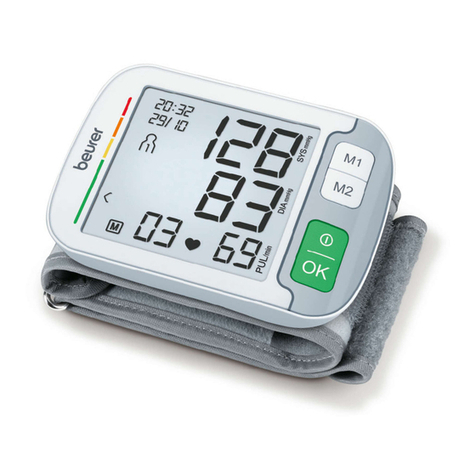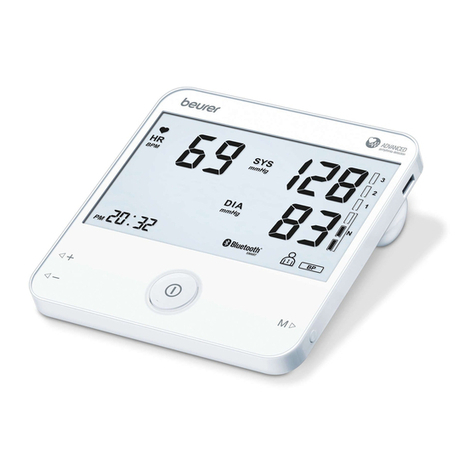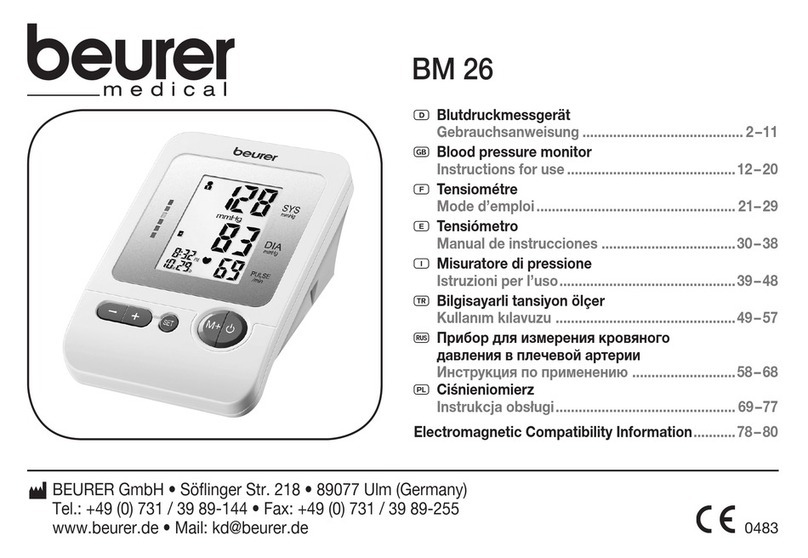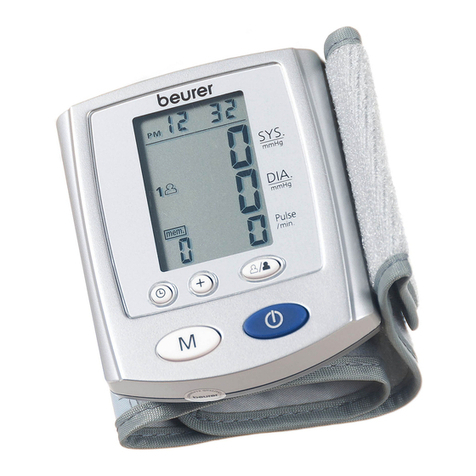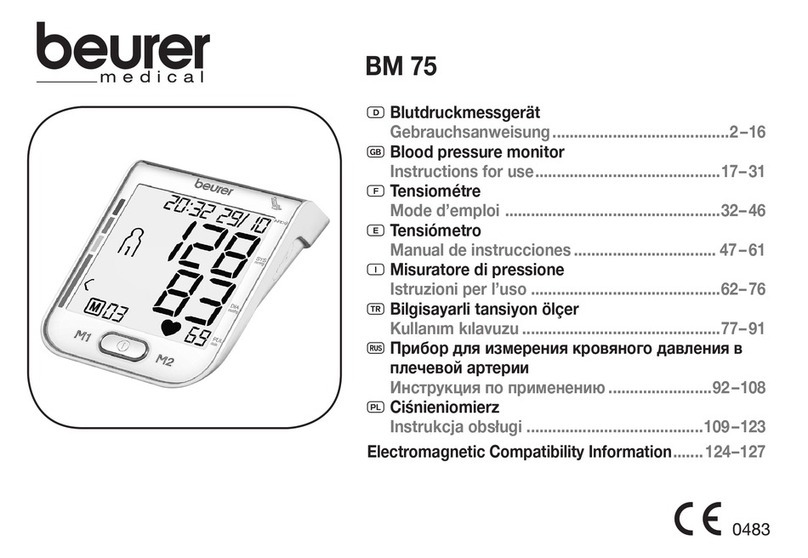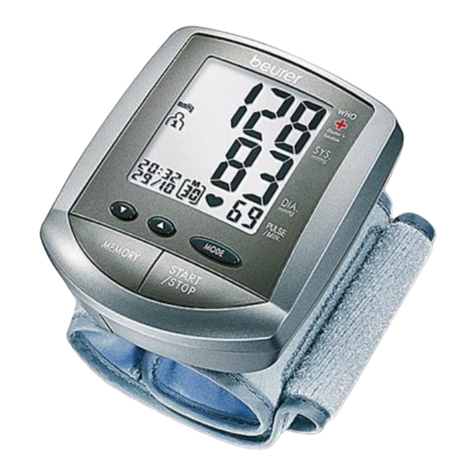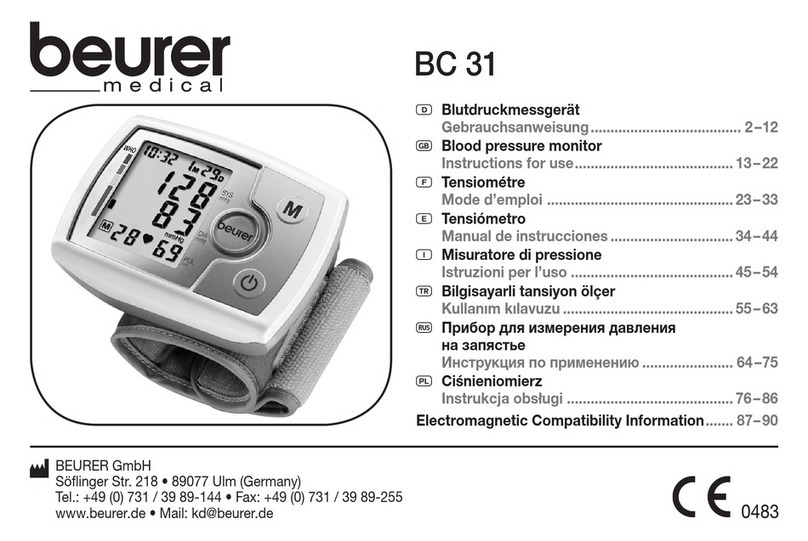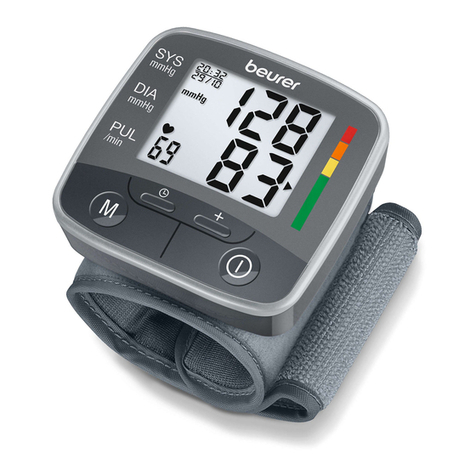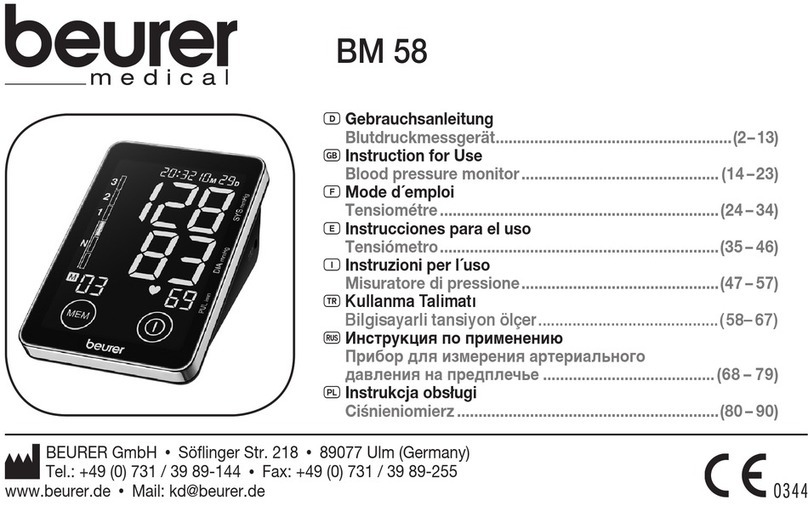
6 7
•
Remove any kind of wrist jewelry or the like
before taking a measurement. This could
cause bruises.
•
Do not place the wrist cuff over heavy clothing
(e.g. a jacket or sweater sleeve) as the blood
pressure monitor will not be able to take a
proper measurement and there is an elevated
danger of acquiring hematoma or skin marks
during the course of the measurement.
•
In case the cuff does not stop inflating,
interrupt the measurement by pressing the
start/stop button and open the cuff at once.
•
Do not disassemble the unit, it may result in
injuries.
•
When applying the blood pressure monitor,
make sure there are no wrinkles in the cuff.
This could cause bruises.
•
Blood pressure measurements can lead to
temporary marks on the skin at the site of
the cuff placement. This is especially the
case in high repetition rates, in hypertonic
patients and in patients with weak pulses. In
rare cases a mark may persist for a couple
of days. Please contact your physician about
these specific risks of cuff pressure in your
specific case.
•
For hygienic reasons the cuff is intended only
for the use by one person.
•
Prolonged over-inflation (cuff pressure
exceeds 300 mmHg or maintained above
15mmHg for longer than 3 minutes) of the
bladder may cause ecchymoma of your arm.
•
It is recommended that the cuff is cleaned
after every 200th use.
•
It is recommended that the cuff is disinfected
twice a week using a cloth that is lightly
moistened with ethyl alcohol (75 – 90%); then
allowed to air dry.
•
The cuff must be fitted snugly around your
wrist, but must not constrict blood flow.
NOTICE:
•
The blood pressure monitor is made up of
precision electronic components. Accuracy
of readings and the instrument’s service life
depend on careful handling. Protect the unit
against hard knocks (e.g. dropping the unit),
moisture, water, dirt, dust, chemicals, extreme
hot or cold temperatures, major temperature
fluctuations, direct exposure to sunlight and
heat sources which are too close (e.g. stoves,
heating radiators). This may damage the unit.
The device must be stored in the specified
ambient conditions. Please see section “9.
Care, maintenance and storing the instrument”
and section “12 Technical Specifications” for
details.
